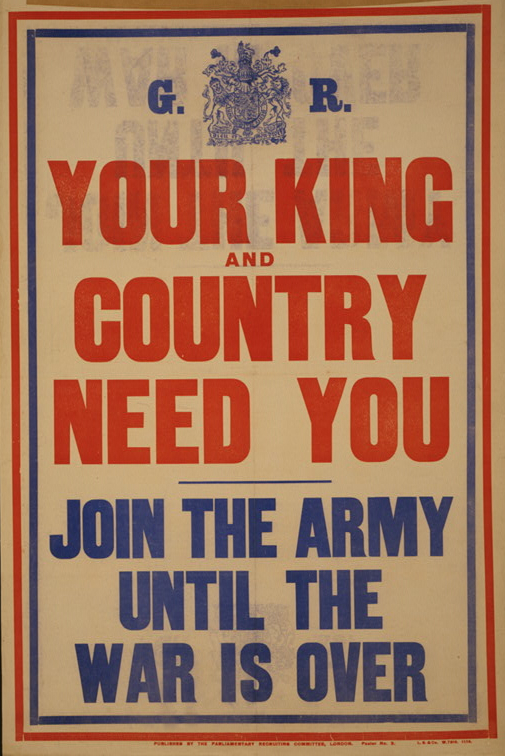Reading the James for Wednesdays class, I stumbled over a particular passage in the Introduction. In it, James references a mailed fist among German propaganda posters. He specifically remarks on page 25 that "Many German posters use the icon of a mailed fist as 'a symbol of somber resolve' to solidify their audience. But as Goebel notes in his essay, that imagery 'backfired on the Kaiserreich' when the imagery was transported abroad and view by others, who saw instead a symbol of German barbarism." I looked around for an example poster, and found this:

" Das ist der Weg zum Frieden -- die Feinde wollen es so! Darum zeichne Kriegsanleihe" roughly translates to "This is the way to peace -- the enemy wills it so! Therefore draw war bonds." The fist is a mailed fist obviously, and covered in medieval armor. So the sentence can be understood as saying "Our enemies want to fight, so we're fighting. Give us money so that we can afford it." Sounds an awful lot like those American posters we read.
The other poster is less striking because the fist is holding a rather blunt looking sword instead of a spike-studded fist. The text I can read says "Deutsche Kriegs," or "German War." The last bolded word might be zustellung, which means "delivery." So literally "German War Delivery." But even if we assume I'm wrong with the last word, the words "German" and "War" are on there with a very medieval looking arm. (Leipzig is a German town, so the poster is probably talking about something happening in Leipzig between November 1916 and February 1917.)
Why, then, would posters like this be considered barbaric? If we look at some of the posters in the McFarlin Collection, we can see:




And then, in Google:

The first three posters make heavy use of sword/medieval imagery, with the most obvious being Joan of Arc. The fourth, the "Remember" poster, has Athena as its leading woman.The final poster, obviously, is a British war banner that entreats soldiers to join the fight because firstly their king, then country needs them. From these posters alone it is obvious that Britain and America of all places are leaning pretty heavily on the idea of chivalric warriors for their soldier propaganda. So why was Germany's treated so poorly? Because they used a mailed fist and plate armor? They didn't have the artistic taste to update the equipment of their soldiers?
While that sense of hypocrisy interests me, I am also focused on James' accusation that war posters "did not show the war's human costs" (32). Apparently, because they did not show bloodied limbs and gangrenous wounds, WWI propaganda dealt with war "in the most abstract way, avoiding any real evocation of the horrors that war actually entails" (Fogarty, qtd. in James). Most posters on the Mcfarlin Library page show soldiers with bandages, or in the middle of stabbing someone, or women in immediate danger. One even has the Statue of Liberty on fire. And, perhaps most glaringly, on page 7 of the Introduction James shows a poster that says "The Potato is a Good Soldier, Eat It Uniform and All." That sounds a lot like a muted reference to the raw reality of what soldiers (read, what Bäumer and his fellow soldiers experienced in All Quiet on the Western Front) lived in the trenches to me
